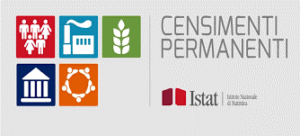
The numbers are provided by a 2020 ISTAT and Cescat Center for Statistics research.
According to the latest ISTAT census in Italy, there are 7 million unused buildings, including more than 5 million empty houses, factories, industrial warehouses, schools, cinemas, theaters, monasteries, shops, vacant offices, hospitals, railway stations, abandoned quarries and mines, as well as properties confiscated from the mafia and ‘ghost towns.’
In the last 50 years, as reported by the WWF, the urbanized area in Italy has increased by 600,000 hectares, while the population has only grown by 27%. Thus, our country has gone from having many people without spaces to having many spaces without people. With the increase in disused spaces, the phenomenon of “Urbex” (Urban Exploration), a practice on the edge of illegality that involves exploring abandoned or disused buildings, has also grown.
The growing public awareness of the deterioration of public assets in recent years has prompted institutions and various associations to engage in the recovery of abandoned properties. In 2017, the State Property Agency launched the “Cammini e Percorsi” project, which aims to recover over 100 public properties along cycling and historical-religious routes throughout Italy and transform them into hostels, hotels, refreshment points, and assistance for tourists and pilgrims. Two years ago, the government allocated 1 billion euros for “Rinascita urbana,” an innovative multi-year program for the redevelopment and increase of public and social housing and urban regeneration.
Abandoned public sites
In the Roman territory alone, there are 195 unused sites. “In over half of the cases, these are public structures, so their recovery activities would theoretically be more ‘facilitated,’ not requiring the preliminary phase of negotiation with private owners,” it further states. “Specifically, 27.2% of the sites are represented by available or unavailable state assets, 15.9% of the structures belong to the Municipality of Rome (mostly former public housing, headquarters, or depots of affiliated companies and administrative and recreational/cultural facilities), and 12.3% represent a residual category (school buildings, agricultural areas, etc.). Private properties, consisting of homes and residential complexes, abandoned factories, abandoned farmhouses, account for 87 and represent 44.6% of the total.”
Abandoned private sites
In addition to these numbers, there are at least 15 disused or underutilized military structures with a total area of 82 hectares, and 3 abandoned agricultural estates: the Tenuta del Cavaliere, covering approximately 300 hectares next to Via Tiburtina; Castel di Guido, representing the largest Italian public agricultural company, with an area of about 2,000 hectares; and Mistica, spanning 33 hectares in Tor Sapienza, Tor Tre Teste, and Torre Maura.
Abandoned sites divided by municipality
Most of these abandoned structures are concentrated in the central municipalities, where urbanization is older and the buildings are more ancient: 43 sites in the 1st municipality (22.1% of the total); 19 sites in the 8th municipality (9.7%); the 7th and 3rd municipalities each have 18 sites, accounting for 9.2% of the total. The 5th municipality follows with 17 sites (8.7%); the 14th municipality has 16 sites (8.2%); the 12th and 15th municipalities have 12 sites each (6.2%); the 13th municipality has 9 sites (4.6%); the 11th municipality has 8 sites (4.1%). Finally, the 9th and 6th municipalities have 7 sites (3.6%); the 4th municipality has 5 sites (2.6%); and the 2nd municipality has 2 (2.1%). The only municipality where no abandoned structures have been identified is the 10th municipality. In particular, within the 1st Municipality, there are 12 abandoned structures owned by the municipality.
The European and national picture
Rome is not an exception in the Italian and European landscape. According to the census conducted by the European Community organization Clarinet, there are one million abandoned and contaminated industrial sites in Europe. Data for Italy, which are partial, list 9,000 sites. According to data collected by ISTAT, however, in Italy, currently unused industrial sites (contaminated and non-contaminated) cover an area of 900,000 hectares, about 3% of the national territory, with an extension equivalent to that of the Marche region.
A different perspective is provided by the Ispra survey, which analyzes contaminated sites. Out of approximately 30,000 regional interest sites identified by Ispra, 16,435 are undergoing reclamation procedures, and 13,258 have concluded reclamation procedures. There are 1,038 such sites in Lazio, and all are subject to ongoing reclamation processes. There are 41 national interest sites, based on size, impact, and hazard, and only one is in Lazio, which is the Fiume Sacco basin in the province of Frosinone.
Inactive companies
Cross-referencing data on funding provided by the Ministry of Economic Development to companies that, according to Chamber of Commerce records, are no longer active, it is found that among the 1,087 companies in the Rome metropolitan area that benefited from a total of 820 million euros in funding, 268 structures are no longer in operation (545 when considering local units). Of these, 156 have ceased operations, 97 are undergoing bankruptcy proceedings, and 15 are inactive. At the territorial level, there are 86 beneficiary companies that are no longer active in the Municipality of Rome (185 local units); Pomezia has a high number (73 companies and 124 local units), followed by Ariccia (25 companies) and Albano Laziale (14 companies). An analysis of the sectors of activity shows that 59.3% of the discontinued companies operate in the manufacturing sector (167 units in absolute terms), especially in the printing industry (22 companies), the metallurgical sector, the wood and paper industry (both with 21 units), and the information technology, electrical, and electronic sector (20 units), while about one in three belongs to the services sector (80 companies, including 28 in commerce).
